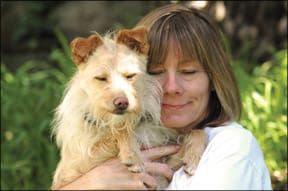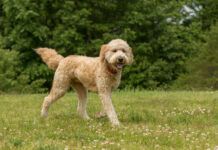Behavioral scientists have long questioned whether dogs are capable of mimicking each other or people. A recent study published in the Proceedings of the Royal Society B: Biological Sciences has shown that dogs are not only capable of mimicking their owners, they do so automatically. In fact, their drive to copy our head and hand (paw) movements is so strong that they tend to do so even when it is not in their best interests.

288
Friederike Range and her colleagues at the University of Vienna Department of Cognitive Biology tested 10 adult dogs of various breeds and their owners. They began by training the dogs to open a sliding door both by using their heads and by using their paws. The dogs then watched their owners perform the same task, opening the door either by hand, or by getting down on the floor and using their heads.
Half of the dogs were then rewarded when they copied their owners; the other half received a reward when they did the opposite. All of the dogs tended to copy their owners, even when it meant they were not rewarded.
Later, when the dogs who had to learn to do the opposite of what their owners did then were asked to copy their owners, they made more mistakes than the first group, suggesting that imitative behavior is the result of developmental interactions rather than simply evolution. In other words, copying people is a learned behavior, not an instinctual one.
While both human and non-human primates, as well as certain species of birds, are known to automatically imitate each other, the phenomenon of copying another species is thought to be rare or even unique. This is undoubtedly due to the special relationship that dogs have evolved with humans.
Knowing that dogs imitate us could facilitate certain types of training. There are several delightful videos making the rounds that show groups of dogs performing tasks such as putting up Christmas decorations and enjoying a picnic at the beach. These dogs were trained in Hungary by clicker trainers who use what they call the “Mirror Method” of training. For example, when they want their dogs to sit, the trainers will crouch down themselves.
– Mary Straus






